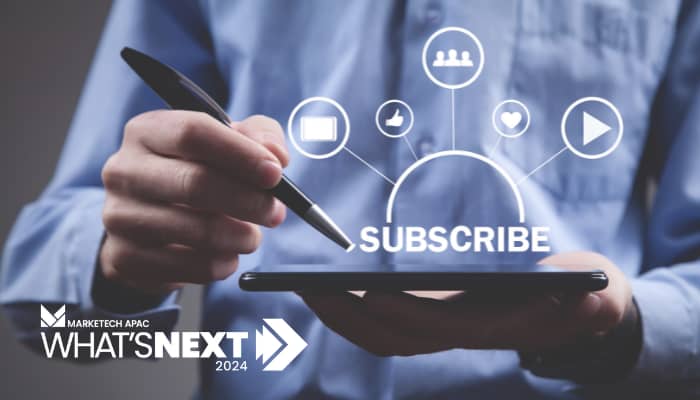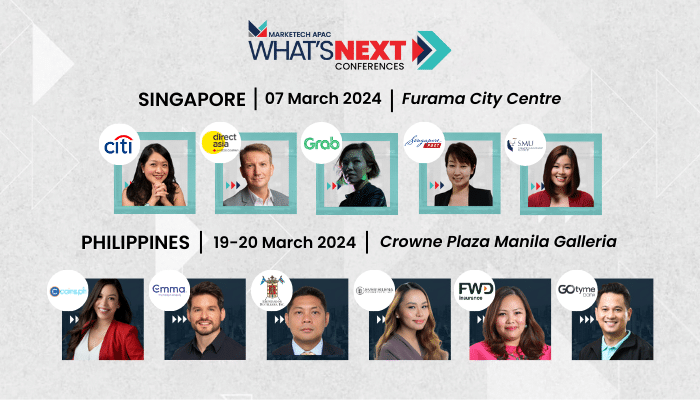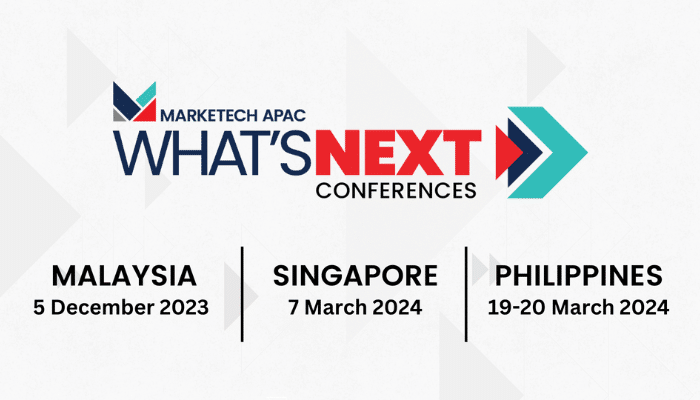The retail landscape is dynamic. And trends tend to come and go based on evolving consumer behaviours, technological advancements and global economic shifts. But one trend, in particular, has quickly taken the retail world by storm, cementing its place as a lasting force – and that’s subscriptions.
The subscription economy grew by more than 300 per cent between 2012 and 2019. And it’s continuing its meteoric rise thanks in large part to Amazon Prime making subscriptions a part of everyday life for many Australians. In fact, according to Telsyte data, Amazon Prime had 4.5 million subscribers in Australia as of June 2023.
“This is a huge amount of people who are opting for additional convenience with a recurring order. And that convenience is key. It’s creating the sense of brand loyalty, giving subscription businesses a recurring touch point with a subscriber on a cadence versus relying on a one-off purchase,” says Carl Nightingale, Head of Product for Chargebee Retention.
“That committed relationship creates a partnership and allows brands to be more personalised in how they engage subscribers, which leads to healthier unit economics overall.”
The Relationship Between Subscriptions and Loyalty
Many loyalty programs include a subscription element, and many subscription services incorporate conventional loyalty principles. Both of these approaches provide value to customers, whether members or subscribers, in return for something valuable to a brand or retailer. In the context of loyalty programs, the exchange is data which can be used to generate deep customer insights which enable better, customer-centric decision making across all areas of the business. For subscription programs, it’s the predictability that comes with recurring revenue. At a time when consumers are encountering higher prices and adjusting their spending patterns, this value exchange is becoming paramount.
Consumers want discounts and other benefits to reduce the overall cost of their purchases. At the same time, brands – especially, retailers – need strategies to retain and attract new customers, especially as inflation-driven brand switching runs rampant. The good news is that subscription and loyalty programs, as well as hybrid programs that combine elements of both, excel at boosting customer retention. They create dependable, ongoing and expanding revenue streams and significantly greater customer lifetime value when executed well.
Subscription and loyalty programs boost customer retention by:
- Leveraging the psychology of affiliation and community
- Offering tangible value and convenience to members and subscribers
- Creating more opportunities and interaction points for customer engagement and marketing
- Enabling more sophisticated personalisation and insights into customer behaviour
The Psychology of Subscriptions
Subscription programs create an emotional, exclusive draw for consumers to join loyalty programs. Combining the convenience and savings of subscriptions strengthens customer savings while helping customers feel valued. Loyalty programs will typically recognise a customer’s long-standing status as a member (e.g., member since 2010). They may even recognise certain milestones, creating an environment where customers feel appreciated — an essential factor in customer retention.
Subscriptions represent enduring partnerships between customers and brands underpinned by a financial commitment. Though they require nurturing, this relationship is mutually beneficial, providing consumers consistency, reliability and convenience while businesses reduce their acquisition costs.
“The market has shifted in the last few years to no longer being about growth at all costs but about healthy, sustainable growth. And that has ushered in an overwhelming focus on subscriber retention, even more so than acquisition in the market,” Nightingale shares.
“We’re seeing companies prioritise efforts to engage and retain their existing subscribers above and beyond new growth and new acquisition. This isn’t surprising, given the fact that it can be up to five times more expensive to acquire a new customer than retain an existing customer.”
Subscriptions Create a Sense of Community
Subscriptions often employ triggers to prompt customers to use a product or service, generating habitual behaviour. In return for the continued benefit the customer receives from those products or services, such as the convenience of a home-delivered meal kit or access to a library of media content, the customer gives the brand a modest recurring fee and (usually) access to their behavioural and preference data. This exchange is one that consumers are increasingly eager to make.
Rather than discrete transactions, subscriptions feature recurring incremental payments, reliable and regular shipments of (or access to) products or services, and an ‘always on’ experience — often more affordable than making a series of one-time payments. Once a consumer becomes a subscriber, many typical barriers and friction points associated with purchasing are eliminated or mitigated.
Beyond the purely behavioural and transactional aspects of subscription psychology, subscriptions offer a sense of community. The continuous relationship between a brand and its subscribers creates a feeling of belonging to that brand and other subscribers. Brands can encourage this communal aspect through rewards programs, subscriber interactions, events and contests and other relevant content.
Many subscriptions also offer customers choice and customisability. Subscribers can pay for additional value by choosing an upgrade or a higher plan. This flexibility also helps develop customer loyalty – consumers see the opportunity to have different personalised subscriptions as meeting their needs rather than something sold to the masses.
Subscriptions Drive Customer Retention
The relationship between value and loyalty can go a long way toward boosting retention rates. But subscribers are inherently easier to retain than customers who require constant reacquisition efforts. The rationale for this is straightforward: a subscriber has to proactively cancel the subscription and until they take that step, the company has opportunities to prevent or dissuade cancellation.
How significant is the potential impact for retail brands to increase their retention rates through subscriptions? According to Bain & Company, a mere 5 per cent increase in customer retention rates can lead to as much as 25 per cent profit growth. A similar study by McKinsey found that subscription-based businesses grow at a rate five times faster than traditional businesses, on average, and also demonstrate higher profitability, with an average EBITDA margin of 25 per cent.
Subscriptions present a substantial opportunity that retailers can leverage. Businesses can track activity across various channels and tools through automated workflows to optimise retention rates. Customers who slow their activity are at a higher risk of churning than those who progressively increase their activity over time. By collecting, tracking and analysing customer data, companies can gain insights that inform the actions needed to retain more customers, including those identified as the most valuable to the brand.
Personalised Upselling, Cross-Selling and Marketing to Subscribers
Retention isn’t the only advantage that subscriptions and loyalty programs provide. They also provide companies with built-in marketing channels to engage and connect with customers. Consumers willingly share relevant personal information in exchange for the value they receive from their subscriptions and loyalty memberships. This kind of first-party data is becoming more critical with the sunsetting of third-party cookies.
“On the data front, with privacy regulations like GDPR and Australia’s Privacy Act, subscription models offer an opportunity to engage the customer in a voluntary exchange of data that can be leveraged for more personalisation, driving more results upstream. In a subscription model, brands can engage with their customer at different touch points. Then they can use all of those touch points to gather more personalised data,” says Nightingale.
“It’s much easier creating a highly personalised experience with a subscription model versus a non-subscription model that often relies on third-party cookies, which are being phased out entirely.”
Companies obtain valuable data from each customer transaction through subscriptions and loyalty programs. When able to execute marketing and promotions against these insights, retailers and direct-to-consumer brands can reap significant rewards. Transactional data provides valuable insights into customers’ purchase habits, including what they buy, how often they make purchases (monthly, weekly, etc.), and their preferred payment method.
This intelligence can inform how discounts and offers are customised to increase the likelihood of redemption, as opposed to generic promotions that are less targeted and offered to all customer segments. Once again, this comes back to CEO of Eagle Eye Tim Mason’s three golden rules of loyalty:
- Treat others as they’d like to be treated: When you’re designing your program, don’t treat people as you’d love them to be, treat them how they like to be treated.
- Reward the behaviour you seek: Become clear in understanding the behaviour that makes a real difference to your goals and incentivise customers accordingly.
- Follow the DIAL approach for continuous improvement: When you have a loyalty program, you are privy to a significant amount of customer Data, which should be used to generate Insight. But the key is to then turn those Insights into Action – something that makes a difference and sparks customer Loyalty.
“Treat people like individual customers that are giving you this data willingly as part of their consumer habits. Then treat them to something relevant to them, which is going to get them to spend more time with you,” Al Henderson, Chief Sales Officer at Eagle Eye, says.
Grocery Retailers Well-Positioned
Grocery retailers are particularly well-positioned to gather data that reveals customer shopping habits and preferences. For example, if a grocer can infer that a customer is a pet owner based on past purchasing patterns, offering a discounted deal on pet food will create a more positive impression on that shopper – and increase the likelihood that the offer is redeemed – much more than a blanket discount on breakfast cereal or milk ever could.
Personalised offers can be distributed through many relevant touch points on special occasions like birthdays and subscription/loyalty membership anniversaries or seasonal promotions. These should be tailored to individual customer preferences and throughout a customer’s buying journey starting from the initial expression of interest through the purchase process and up to delivery or pickup.
Each of these touchpoints provides a brand or retailer with opportunities to gather more customer preference data. This, in turn, can be used to enhance and fine-tune personalised marketing strategies.
Al Henderson, shares, “Customers don’t identify with online and offline anymore. They’re just transacting with a brand. And, therefore, it’s important to bring the benefit of the subscription and the offers anywhere they might be – whether that’s in an app, in-store or online to get the uplift and maximise on the potential, removing friction from the journey.”
Subscription Success: The Role of Technology Partners
Brands often require technology partners to help them gather, manage and execute these engagement strategies, utilising the customer data available through their systems, such as point of sale, CRM and loyalty program databases. Eagle Eye, for example, enables companies to leverage this digital opportunity by providing real-time omnichannel customer connectivity, seamlessly integrating with all points of purchase and the retailer’sdata analytics capabilities.
Through this connection, Eagle Eye enables the implementation of all a retailer’s data-driven decisions to reach the end customer using a comprehensive digital marketing toolkit. This toolkit encompasses real-time digital loyalty programs, personalised promotions, subscription services, gifting and cashback initiatives, charitable donations, third-party partnerships, coalitions and more.
Many brands and retailers can face challenges with the technical and payment infrastructure required to accelerate the implementation of full-featured subscription programs. Partnering with platforms like Chargebee enables companies to rapidly launch and iterate subscription-based plans and products through freemium, trial and paid offerings. Helping companies provide tailor-made offers for long-time subscribers and those most likely to churn, Chargebee also mitigates cancellations.
Companies receive actionable insights and analytics on those customers who do churn to sharpen and refine future customer retention strategies. They also benefit from the automation of collections and revenue recovery. Together, these tools provide brands and retailers a powerful way to merge loyalty and subscription programs, ultimately reducing churn, upselling to existing customers and increasing customer lifetime value.
CLV and Predictable Purchasing Patterns
The revenue impact of improved Customer Lifetime Value, or CLV, indicates the average revenue a company can generate from a customer over the entire lifetime of their account. In simpler terms, it’s the revenue a company will earn before the customer terminates the relationship. For example, if customers spend $100 on products or services every month for nine months, their CLV is $900. If they remain with the company for two years, their CLV increases to $2,400.
CLV is an important metric because it gives businesses a customer-centric viewpoint to inform crucial marketing and sales strategies, such as customer acquisition, retention, cross-selling, upselling and support. “CLV is not a new concept. But with the subscription business model, it becomes a very powerful concept to think about as it relates to maximising the unit economics for our business,” Nightingale points out.
A subscription program’s ability to provide businesses with a predictable revenue stream with ongoing growth potential makes the revenue model powerful. Unlike static revenue figures that remain constant monthly, subscription revenue compounds with each new subscriber. As long as businesses can acquire new subscribers at a pace that surpasses customer churn, revenue grows exponentially.
In practice, subscriptions increase CLV by fostering ongoing customer engagement and loyalty. They create a consistent revenue stream over an extended period, encouraging customers to make recurring purchases and develop a deeper connection with the brand. Additionally, the data collected from subscription customers can be used to personalise offers and improve the overall customer experience, further enhancing CLV.
Subscription-Fuelled Loyalty in Action
Woolworths demonstrates the power of subscriptions, even in a challenging economic environment. Everyday Extra, introduced by Woolworths Australia in 2022 as an extension of its Everyday Rewards loyalty program. For AU$7 per month or AU$70 per year, Everyday Extra members receive a bonus on points for both online and in-store spending, a 10 per cent discount on one online or in-store shopping trip per month at both the BIG W and Woolworths brands as well as exclusive subscriber-only offers and perks. By the first quarter of 2023, the program had enrolled over 250,000 active subscribers.
Subscriptions + Loyalty = Higher Retention and Engagement
In today’s uncertain economic landscape, companies need every advantage possible to attract, engage and retain customers. Subscription and loyalty programs offer a potent combination for retailers to achieve these critical objectives. Loyalty program members significantly outspend non-loyalty members by a wide margin, providing a source of long-term recurring revenue. Subscribers also tend to bring a substantially higher lifetime value to brands than sporadic customers, delivering stability and long-term potential for brands offering subscription programs.
However, the impact of these strategies goes beyond revenue. Subscriptions and loyalty programs create a strong bond between the customer and the brand, driven by affinity, convenience and value. They increase the number of touchpoints a customer has with a brand and yield valuable first-party data related to purchase history and preferences. In this way, these programs can supercharge personalisation and engagement strategies and make a retail brand more prominent in a consumer’s daily life.
These advantages are evident in retail and food service brands that have successfully harnessed subscription loyalty to boost in-store and digital revenues, increase frequency and create added value for their members. By partnering with technology companies like Eagle Eye and Chargebee, which specialise in the development and execution of loyalty and subscription strategies, many brands have experienced the revenue and growth results that hybrid subscription-loyalty initiatives can deliver.
Companies like Woolworths that have already embraced subscriptions and loyalty programs have the added advantage of attracting customers, building and refining loyalty strategies and strengthening and deepening customer relationships, reducing the likelihood of customer churn. As the subscription model continues to gain popularity, the true competitive edge will come from brands that efficiently and effectively execute it in partnership with specialised and experienced solutions providers who excel at optimising these programs.

This article is written by Jonathan Reeve, Vice President APAC, Eagle Eye
The insight is published as part of MARKETECH APAC’s thought leadership series under What’s NEXT 2023-2024. What’s NEXT 2023-2024 is a multi-platform industry initiative which features marketing and industry leaders in APAC sharing their marketing insights and predictions for the upcoming year.

















